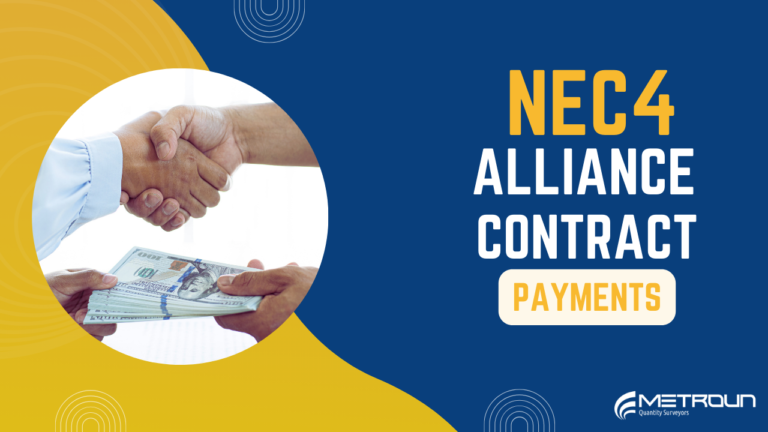Unlocking the Power of the NEC4 Alliance Contract
The NEC4 Alliance Contract introduces a fresh perspective to contract structures within the NEC framework. While all NEC contracts prioritise mutual trust and cooperation among parties, the Alliance Contract takes this ethos to the next level. It defines a higher level of interdependency expected from all members, including the client. This, in turn, challenges the tier 1 supply chain to embrace a completely different approach from their conventional practices.
But how does the payment process work within this innovative contract structure? Let’s delve into the details…

Payment Structure in the NEC4 Alliance Contract
The foundation of payment in this contract is the “Defined Cost plus Fee,” similar to Option E in the NEC4 ECC. Payments are facilitated through a Project Bank Account, established by the Alliance, with provisions for adding Named Contractors and other Suppliers.
Understanding “Defined Cost”
“Defined cost” refers to “the cost of components in the schedule of cost components, minus disallowed cost.” Disallowed cost is simply “cost that lacks justification in a partner’s accounts and records.” In essence, any cost falling within the schedule of cost components, supported by substantiating evidence like site records, diaries, and invoices, is eligible for reimbursement.
Payment Process in NEC 4 Alliance Contract
The Alliance Manager assesses the amount due, calculated as the sum of the Defined Cost plus Fee of the Partners, alongside any other relevant amounts. This assessment is then submitted to the Client’s Representative for scrutiny. The representative checks the claimed payment amounts and communicates any necessary corrections to the Alliance Manager, who subsequently makes the required adjustments before resubmission for final approval.
Incentivisation and the Performance Table
The NEC4 Alliance Contract introduces incentivization opportunities, outlined in ‘The Performance Table.’ This concept rewards partners for achieving savings in relation to the budget and for avoiding overspending.
- The Performance Table outlines specific dates for assessing the alliance’s performance as per the table’s criteria.
- If actual performance surpasses the target, partners are rewarded with the stated amount for that target.
- Conversely, if the target isn’t met, the partner is liable for a specified amount, akin to a pain-gain mechanism, albeit with distinct terminology.
Client’s Costs
One significant difference between the NEC4 Alliance Contract and other NEC contracts is the inclusion of ‘Client’s Costs.’ These costs are calculated using rates and prices detailed in the client’s cost schedule, which is generally left undefined for the client’s determination. Additionally, ‘Client’s Costs’ may encompass amounts paid to other members for defect rectification, with adjustments for any amounts recovered by the client from insurers.
This incorporation of ‘Client’s Costs’ allows for a holistic view of alliance costs, enabling their consideration in incentive payment assessments against the budget.






